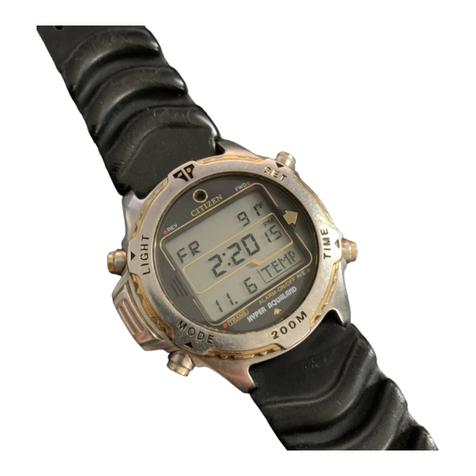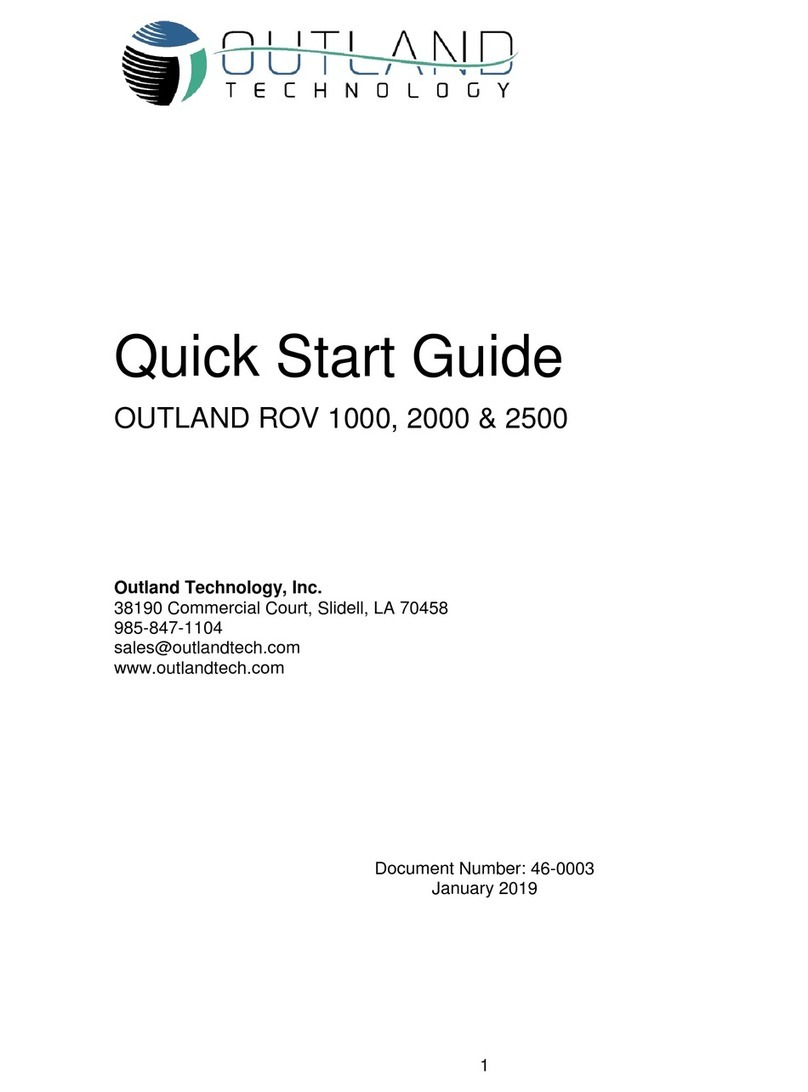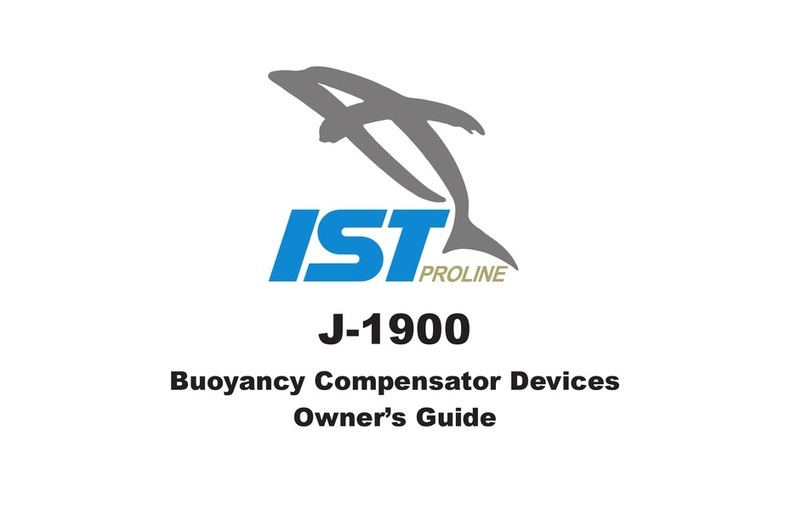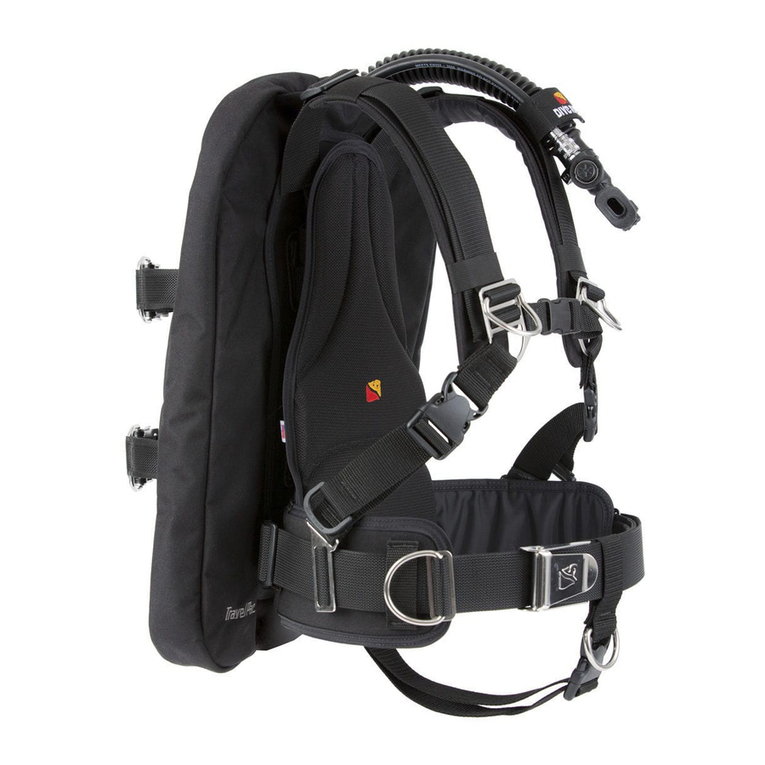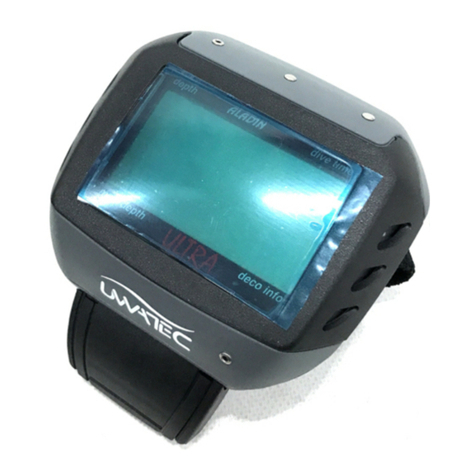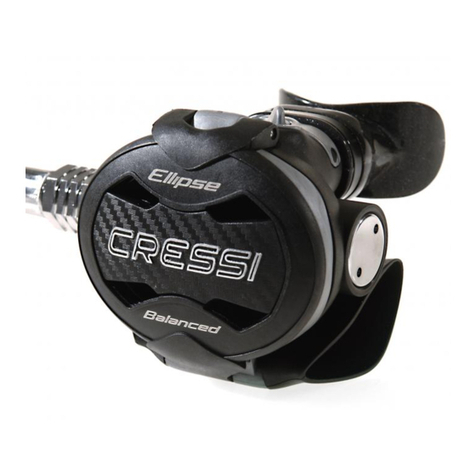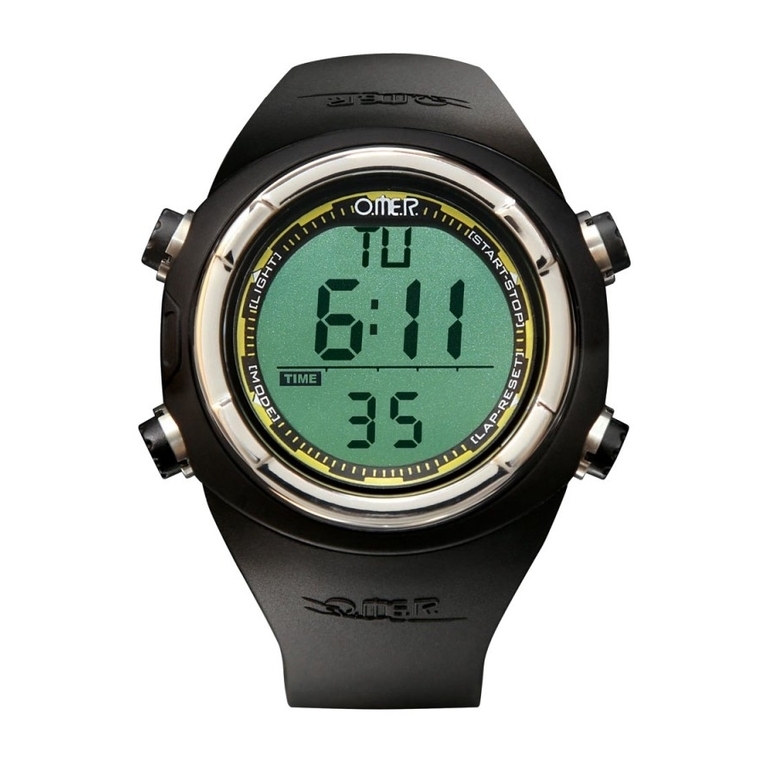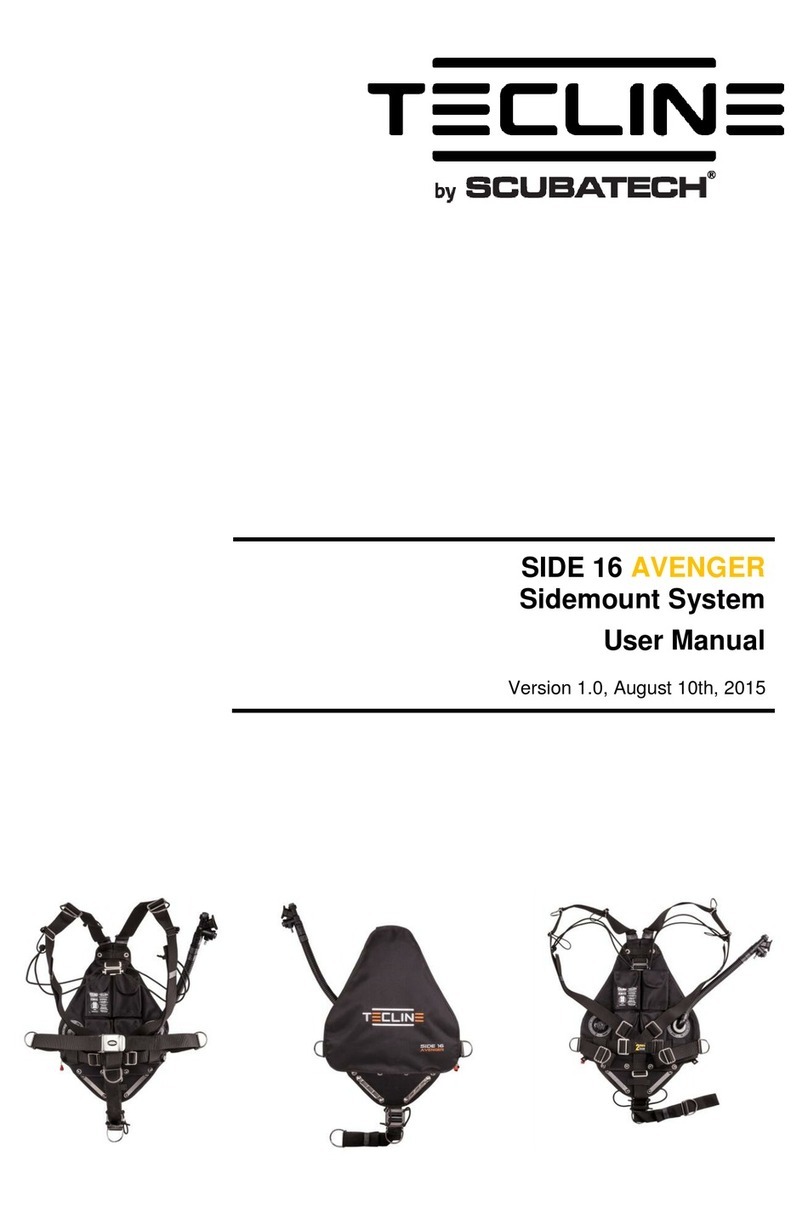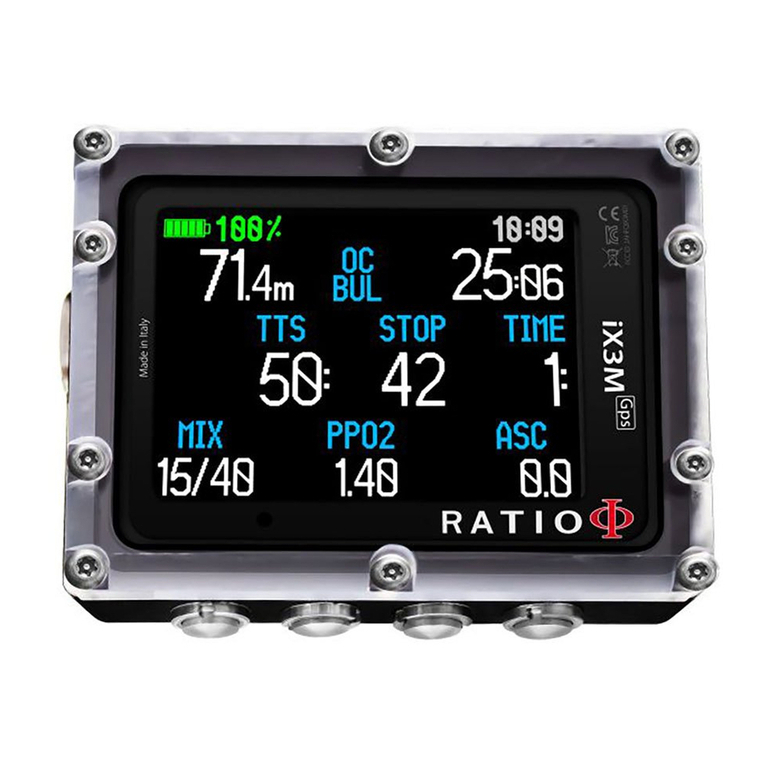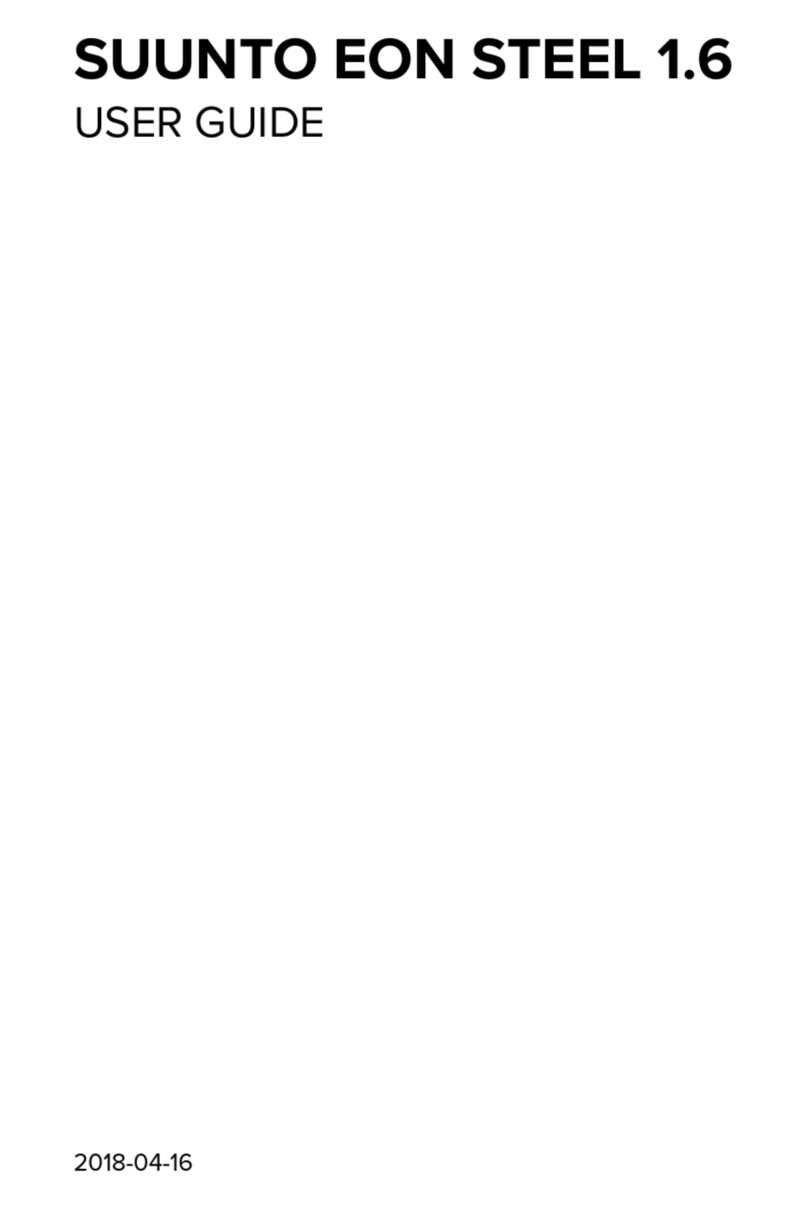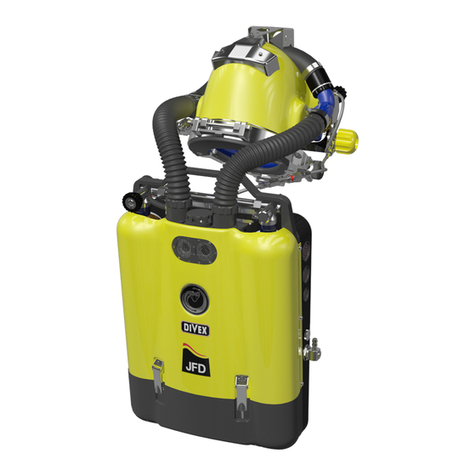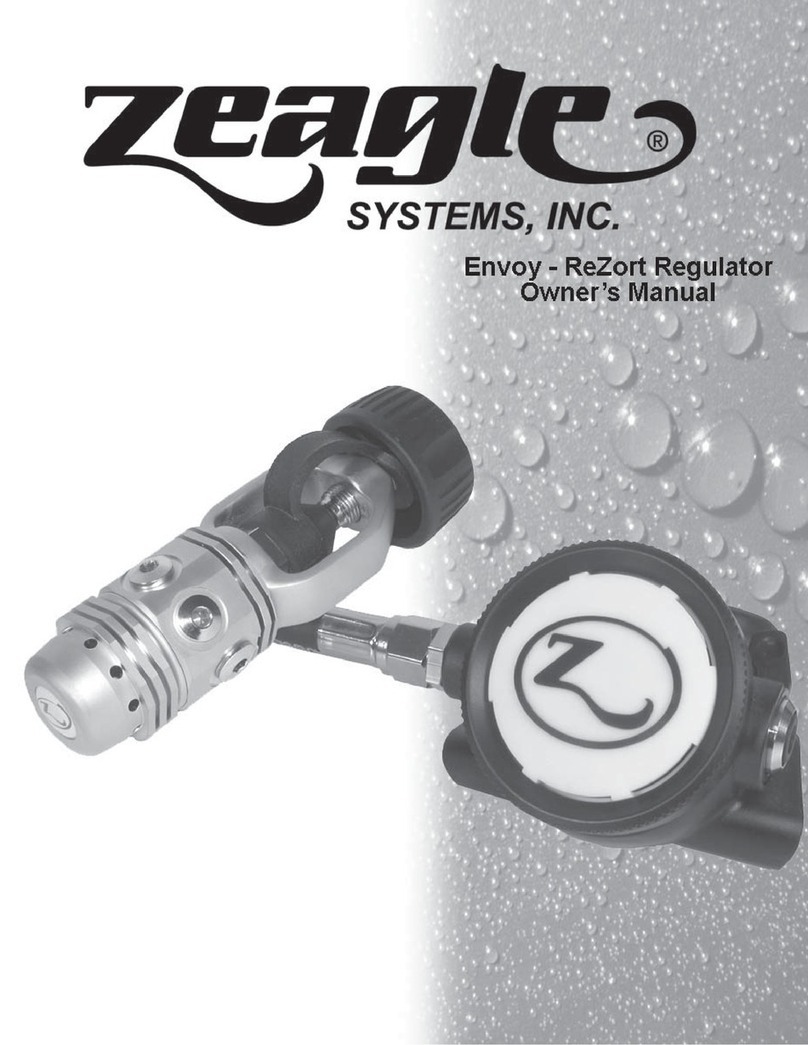Advanced Navigation Hydrus User manual

Hydrus
Reference Manual
v1.0 02 August 2023

Contents
1 Revision History 1
1.1 Firmware Changelog 1
1.2 Hardware Changelog 1
2 Introduction 2
2.1 Using the Manual 3
2.1.1 Read the Introduction 3
2.1.2 Follow the manuals structure 3
2.1.3 Use diagrams and illustrations 3
2.1.4 Seek clarification 3
2.1.5 Software and Manual updates 3
2.2 Shipping Hydrus - Dangerous Goods 4
3 Specifications 5
3.1 Hardware Specifications 5
3.1.1 Physical Dimensions 5
3.1.2 Weight and Buoyancy 6
3.1.3 Operating Temperatures 6
3.1.4 Operating Depth and Pressure Resistance 6
3.1.5 Storage Capacity 6
3.2 Compliance and Certification 6
3.2.1 Regulatory Compliance 6
3.2.2 Certification 6
3.3 Software Extensibility 7
3.3.1 Docker Software Extensibility 7
3.4 Navigation and Localisation 7
3.4.1 Inertial Navigation System (INS) 7
3.4.2 Global Navigation Satellite Systems (GNSS) 8
3.4.3 Pressure Sensor 8
3.4.4 Doppler Velocity Log (DVL) 8
3.4.5 Transponder 9
3.5 Communication 9
3.5.1 Wi-Fi Communication 9
3.5.2 Wi-Fi Connection 9
3.5.3 Subsonus USBL 9
3.6 Power and Propulsion 10
3.6.1 Battery Power Supply 10
3.6.2 Propulsion System 11
Page i

3.7 Camera and Lighting 11
3.7.1 Camera Specifications 11
3.7.2 Lighting Features 12
4 General Safety Precautions 13
4.1 Handling of Hydrus 13
4.2 Electrical Hazards 13
4.3 Underwater Operation 14
4.4 Hazardous Materials 14
4.5 Hull Breech 14
4.6 Transport and Storage 15
5 Quick Start Guide 17
6 Getting Started 19
6.1 Initial Set-Up 19
6.1.1 Software and Hardware Prerequisites 19
6.1.2 Safety Precautions for handling Hydrus out-of-water 19
6.1.3 Unpacking and Inspection 20
6.1.4 Power and Charging 21
6.1.5 Initial Charge 22
6.1.6 Putting Hydrus from Low Power to High Power 22
6.1.7 Device Connection 24
6.1.8 Testing and Functional Checks 25
6.1.9 Subsonus 26
6.2 User Interface Overview 27
6.2.1 Hydrus EPD (Electronic Paper Display) Screen 27
6.2.1.1 Normal Operation Screen Overview 28
6.2.1.2 Alert Notification Screen Overview 29
6.2.2 Hydrus Web User Interface (webUI) 30
6.2.2.1 Advanced Navigation Drop Down Menu 32
6.2.3 Subsonus Web User Interface (webUI) 36
6.2.3.1 Device List 36
6.2.3.2 Open Device Configuration 38
6.2.3.3 Hydrus Command Dialog Box 40
6.3 Power States 41
6.3.1 High Power 41
6.3.2 Low Power 42
6.3.3 Shipping Mode 43
6.3.4 Restarting Hydrus 44
6.4 Connecting Hydrus 45
6.4.1 Connecting Hydrus Via Access Point 45
6.4.2 Connecting via Network 46
6.5 Installing Subsonus 49
Page ii

6.5.1 Installation Checklist 49
6.5.1.1 Subsonus Surface Installation Checklist 49
6.5.2 Connection Diagrams 50
6.5.3 Mounting Position 51
6.5.4 Surface Unit Reference Source 53
6.5.4.1 Advanced Navigation GNSS Compass 54
6.5.4.2 Advanced Navigation GNSS/INS 60
6.5.4.3 Third Party GNSS/INS or GNSS Compass 61
6.5.5 Hydrus Device Addresses 61
6.5.5.1 Device Address Identification 61
7 Considerations 63
7.1 Environmental Considerations 63
7.1.1 Water Temperature 63
7.1.2 Water Density 63
7.1.3 Currents and Tides 63
7.1.4 Visibility 63
7.1.5 Biological Considerations 63
7.1.6 Protected Areas 63
7.1.7 Marine Life Interaction 64
7.2 Power Management and Endurance 64
7.2.1 Charging 64
8 Mission Planning 65
8.1 Mission Planning Process 65
8.1.1 Assumptions 65
8.1.2 Mission Planning Procedure 65
8.2 Mission Management 67
8.2.1 Creating New Missions 67
8.2.2 Editing Existing Missions 67
8.2.3 Importing and Exporting Missions 67
8.2.3.1 Import Procedure 68
8.2.3.2 Export Procedure 70
8.3 Mission Planning Tools 72
8.3.1 Basic Interaction of the Polygon 73
8.3.2 Polygon Operations Panel 74
8.3.3 Polygon Tools 75
8.3.4 Map Tools 76
8.3.5 Device Tools 76
8.4 Mission Considerations 77
8.4.1 Altitude 77
8.4.2 Pause Depth Considerations 77
8.4.3 Bluewater Missions 77
8.4.4 Hydrus Transit Between Tasks 78
Page iii

8.4.5 Using Subsonus with Hydrus 78
8.5 Mission Patterns 79
8.5.1 Lawnmower Survey 79
8.5.2 Transect Survey 79
8.5.3 Preferences in Lawnmower/Transect Surveys 79
8.5.3.1 Name 79
8.5.3.2 Path Generation 79
8.5.4 Travel Pose 80
8.5.4.1 Vertical 80
8.5.4.2 Media Capture 80
8.5.5 Mission Profiles 82
8.5.5.1 Sparse Lawnmower Survey 82
8.5.5.2 Dense Lawnmower Pattern 83
8.5.5.3 Super Dense Lawnmower Pattern 84
8.5.5.4 Transect Survey 85
8.6 Recovery Location 87
8.6.1 Relative to Subsonus 88
8.6.2 Geodetic Location 88
8.7 Camera Parameters 88
8.7.1 Overview 88
8.7.2 Exposure Settings 88
8.7.3 Lighting Settings 89
8.7.3.1 Brightness Level 89
8.7.4 Correction Settings 89
8.7.5 Image Settings 90
8.7.6 Video Settings 90
8.8 Bail-out Conditions 92
8.8.1 On Battery Depletion 92
8.8.2 On Loss of Acoustic Communication 93
8.8.3 Maximum Surface Depth 93
8.8.4 Minimum Bottom Altitude 94
8.8.5 Low Storage Space 95
8.9 Mapping Enhancements 96
9 Hydrus Operations 103
9.1 Hydrus Deployment Training 103
9.1.1 Hydrus Test Clip Attachment 103
9.1.2 Attachment of Hydrus Test Clip 104
9.1.3 Suggested Tether 106
9.1.4 Safety Precautions 106
9.1.5 Controlled Launch Technique 106
9.1.6 Testing and Familiarisation 107
9.1.7 Live Mission Deployment 107
Page iv

9.2 Hydrus Pre-deployment 107
9.2.1 Hydrus Pre-Deployment Procedure 107
9.2.1.1 Post Deployment 113
9.3 Hydrus Deployment 113
9.3.1 Launching and Recovering 113
9.3.2 Deploying Hydrus 113
9.4 Hydrus Monitoring 115
9.4.1 Mission Initiation 115
9.4.2 Mission Running 115
9.4.3 Mission Complete 117
9.5 Hydrus Retrieval 117
9.5.1 Steps to retrieve and secure Hydrus 117
9.6 Post Retrieval Actions 118
10 Post-Mission 121
10.1 Data Download 121
10.1.1 Download Procedure 121
10.1.2 Deleting Sessions 124
10.1.3 Session Payload Breakdown 125
11 Maintenance 127
11.1 Part Numbers and Ordering 127
11.1.1 Standalone Units and Packs 127
11.1.2 Accessories and Spare Parts 128
11.1.3 Hydrus 300 Pack 130
11.1.4 Hydrus 300 Subsonus Surface kit 131
11.2 Routine Inspection and Cleaning 131
11.2.1 Cleaning 133
11.2.2 Thruster Specific Cleaning 134
11.3 Impeller Maintenance 136
11.3.1 Thruster Assembly Exploded 136
11.3.2 Thruster Layout 137
11.3.2.1 Tools and Materials Needed 141
11.3.2.2 Thruster Change Out Procedure 142
11.4 Firmware Update 146
11.4.1 Upgrading Hydrus 146
Page v

Page vi
D I S C L A I M E R
Information in this document is provided solely in connection with Advanced Navigation products.
Advanced Navigation reserves the right to make changes, corrections, modifications or improvements, to
this document, and the products and services described herein at any time, without notice.
All Advanced Navigation products are sold pursuant to Advanced Navigation’s terms and conditions of
sale.
Purchasers are solely responsible for the choice, selection and use of the Advanced Navigation products
and services described herein, and to the extent permitted by law, Advanced Navigation assumes no
liability whatsoever relating to, or in anyway connected to, the choice, selection or use of the Advanced
Navigation products and services described herein.
No license, express or implied, by estoppel or otherwise, to any intellectual property rights is granted under
this document. If any part of this document refers to any third party products or services it shall not be
deemed a license grant by Advanced Navigation for the use of such third party products or services, or any
intellectual property contained therein or considered as a warranty covering the use in any manner
whatsoever of such third party products or services or any intellectual property contained therein.
UNLESS OTHERWISE SET FORTH IN ADVANCED NAVIGATION’S TERMS AND CONDITIONS OF
SALE ADVANCED NAVIGATION DISCLAIMS ANY EXPRESS OR IMPLIED WARRANTY WITH
RESPECT TO THE USE AND/OR SALE OF ADVANCED NAVIGATION PRODUCTS INCLUDING
WITHOUT LIMITATION IMPLIED WARRANTIES OF MERCHANTABILITY, FITNESS FOR A
PARTICULAR PURPOSE (AND THEIR EQUIVALENTS UNDER THE LAWS OF ANY JURISDICTION),
FAULTTOLERANCE OR INFRINGEMENT OF ANY PATENT, COPYRIGHT OR OTHER
INTELLECTUAL PROPERTY RIGHT.
UNLESS EXPRESSLY APPROVED IN WRITING BY TWO AUTHORIZED ADVANCED NAVIGATION
REPRESENTATIVES, ADVANCED NAVIGATION PRODUCTS ARE NOT RECOMMENDED,
AUTHORIZED OR WARRANTED FOR USE IN MILITARY, AIR CRAFT, SPACE, LIFE SAVING, OR LIFE
SUSTAINING APPLICATIONS OR HAZARDOUS OR HIGH RISK ENVIRONMENTS REQUIRING FAIL-
SAFE OR FAULT TOLERANT PERFORMANCE, NOR IN PRODUCTS OR SYSTEMS WHERE FAILURE
OR MALFUNCTION MAY RESULT IN PERSONAL INJURY, DEATH, OR SEVERE PROPERTY OR
ENVIRONMENTAL DAMAGE. SUCH USE IS AT PURCHASERS OWN RISK, EVEN IF ADVANCED
NAVIGATION KNOWS OF SUCH USE.
ADVANCED NAVIGATION PRODUCTS WHICH ARE NOT SPECIFIED AS "AUTOMOTIVE GRADE"
MAY ONLY BE USED IN AUTOMOTIVE APPLICATIONS AT USER’S OWN RISK.
Resale of Advanced Navigation products with provisions different from the statements and/or technical
features set forth in this document shall immediately void any warranty granted by Advanced Navigation
for the Advanced Navigation product or service described herein and shall not create or extend in any
manner whatsoever, any liability of Advanced Navigation.
Information in this document supersedes and replaces all information previously supplied. References to
Advanced Navigation in this disclaimer includes its related bodies corporate.
Document Version: 1.0 Publication Date:02 August 2023
For more information, contact technical support via email at support@advancednavigation.com.
© 2023 Advanced Navigation - All rights reserved

1 Revision History
Version Date Changes
1.0 02 Aug 2023 Initial Release
Table 1: Revision History
1.1 Firmware Changelog
Version Date Changes
1.02 26 Jul 2023 Initial release
Note: when using with Subsonus, Subsonus must be running v3.220 or later
Table 2: Firmware Changelog
Note: To upgrade the firmware to the latest version, see 11.4 Firmware Update
1.2 Hardware Changelog
Version Date Changes
1.0 July 2023 Initial release
Table 3: Hardware Changelog
v1.0 Page 1 02 August 2023
Hydrus Reference Manual • Revision History

2 Introduction
Hydrus is an autonomous underwater vehicle designed for underwater missions. It contains an integrated DVL
(Doppler Velocity Log), acoustic transponder & modem and INS (Inertial Navigation System). Hydrus provides
obstacle detection and collision avoidance. Users can plan and execute missions in 3D using the online
platform. Hydrus is equipped with a camera, sonar system, and sensors for data acquisition. It supports
underwater terrain mapping, video and still image capture, and collects environmental data.
Hydrus autonomously navigates, avoids obstacles and collects data through the use of AI and advanced control
algorithms. Hydrus can be programmed for complex missions and adjusts based on real-time data analysis.
v1.0 Page 2 02 August 2023
Hydrus Reference Manual • Introduction to Hydrus

2.1 Using the Manual
2.1.1 Read the Introduction
Begin by reading the 2 Introduction section of the manual. It provides an overview of Hydrus, its capabilities,
and an explanation of the manual's structure. This will help you navigate through the manual more effectively.
2.1.2 Follow the manuals structure
The Hydrus manual is structured in a logical sequence, with sections covering different aspects of the operation
of the Hydrus. It is important for the user to follow the manual's structure to ensure no relevant information is
missed. If necessary, bookmark or take notes on important sections for future reference.
2.1.3 Use diagrams and illustrations
The Hydrus manual will include diagrams and other various visual aids. All of these aids are designed to
enhance the understanding of the vehicle's architecture and operation.
2.1.4 Seek clarification
If the user comes across complex or unclear information, do not hesitate to seek clarification and reach out to
valuable insights and help interpret the information correctly. To reach the customer support team please go to
the Advanced Navigation website, click on Support and click Support Center and Tickets. Here the user will be
able to lodge any issue with Hydrus,
2.1.5 Software and Manual updates
New versions of firmware may become available for the Hydrus variant that you are operating. Periodically
check the product page on the Advanced Navigation website for firmware updates. Updates to the manual are
also made from time to time, especially when new firmware is released. Ensure that you are using the latest
reference manual and firmware for your Hydrus variant.
v1.0 Page 3 02 August 2023
Hydrus Reference Manual • Introduction to Hydrus

2.2 Shipping Hydrus - Dangerous Goods
Note: Hydrus contains lithium-ion batteries and is classified as Dangerous Goods UN 3481 (Lithium ion
batteries contained in equipment). Hydrus MUST be shipped as Dangerous goods according to
IATAregulation Section II of PI967, and follow any relevant local and international shipping regulations.
Hydrus incorporates a battery that has not received certification in line with UN38.3 regulations (a set of
standards that govern the safety of lithium and lithium-ion batteries during shipping). Contact Dangerous Goods
shipping agents to ensure the safe shipment of Hydrus, in compliance with local and international shipping
regulations. See 3.6.1 Battery Power Supply specifications for details of the battery contained within Hydrus
Figure 1: Sample Dangerous Goods shipping label
v1.0 Page 4 02 August 2023
Hydrus Reference Manual • Introduction to Hydrus

3 Specifications
For details, review the following specifications for Hydrus:
l3.1 Hardware Specifications
l3.2 Compliance and Certification
l3.3 Software Extensibility
l3.4 Navigation and Localisation
l3.5 Communication
l3.6 Power and Propulsion
l3.7 Camera and Lighting
3.1 Hardware Specifications
3.1.1 Physical Dimensions
Model Dimensions
HYDRUS-300 484 x 264 x 216 mm
Figure 2: Hydrus Dimensions
v1.0 Page 5 02 August 2023
Hydrus Reference Manual • Specifications

3.1.2 Weight and Buoyancy
Hydrus is designed to be positively buoyant (float), and is configured to operate in standard ocean conditions
(Water density of 1.025 kg/L). If users wish to operate Hydrus in liquids of significantly different density, Hydrus
conditions such that a suitable configuration can be determined
Specification Measurement
Weight 6.4 kg
Buoyancy +170 g in salt water (1.025 kg/L density,)
Buoyancy Control Fixed buoyancy
3.1.3 Operating Temperatures
Minimum in Celsius
(°C)
Maximum in Celsius
(°C)
Out of Water Temperature -5°C 50°C
Operating Water Temperature -5°C 35°C
Storage Temperature -20°C 60°C
3.1.4 Operating Depth and Pressure Resistance
Below are the maximum operating depths of the Hydrus. It is important to adhere to the guidelines and
specifications regarding the Hydrus operating depth to ensure safe and reliable operation. Going beyond these
limits can jeopardise Hydrus, its integrity, functionality, and the safety of the mission.
Model Maximum Operating Depth (meters) Pressure Resistance (bar)
HYDRUS-300 300 30
3.1.5 Storage Capacity
Model Storage Capacity
HYDRUS-300 256 GB
3.2 Compliance and Certification
3.2.1 Regulatory Compliance
In order to ensure the safe and responsible operation of the Hydrus Autonomous Underwater Vehicle (AUV),
users must comply with all local regulations. These regulations encompass various aspects such as remote
operation, navigation, communication, traffic separation, collision prevention, and environmental protection, all
of which are essential for the efficiency and safety of underwater operations.
3.2.2 Certification
Hydrus carries the following certifications:
v1.0 Page 6 02 August 2023
Hydrus Reference Manual • Specifications

System Certification
Wi-Fi module and antenna Contains FCC ID: SQG-60SIPT
Contains IC: 3147A-60SIPT
3.3 Software Extensibility
3.3.1 Docker Software Extensibility
Hydrus is developed based on the ROS2standard and utilises Docker compatible containerisation to allow the
Hydrus navigation and payload capability to be extended. Within the Hydrus webUI, there is a Docker function
that allows you to manage software images and containers. This function allows the user to manage Docker
images and containers, monitor their status, control start up behavior and upload new images for container
capabilities of Hydrus.
3.4 Navigation and Localisation
There are a number of subsystems that contribute to the navigation and localisation processes that are essential
to determining Hydrus's position and orientation accurately. A comprehensive description of the various
components that contribute to the navigation and localisation capabilities is provided in this section.
Note: Note: It is recommended to use Hydrus with a Subsonus USBL when accurate positioning over
extended periods of operation are required.
3.4.1 Inertial Navigation System (INS)
Hydrus is equipped with a variety of sensors such as gyroscopes, accelerometers, magnetometers, pressure
sensor, Doppler velocity log (DVL) and Global Navigation Satellite System (GNSS) receiver to provide precise
information on position, velocity, and attitude. These sensors form the Inertial Navigation System (INS) for
Hydrus. To enhance velocity measurements, the onboard Doppler Velocity Log (DVL) is tightly integrated with
the INS. Additionally, the onboard GNSS serves the purpose of obtaining an initial position when the vehicle is
above water. When combined with Subsonus, the INS receives continuous position updates through acoustic
communication.
Specification Value
Roll & Pitch Accuracy 0.1°
Heading Accuracy (Magnetic) 0.3 °
Water Temperature Accuracy 0.5 °C
Dead Reckoning Accuracy 1 % distance travelled
Position accuracy with Subsonus Position Accuracy 0.25 m - 5 m range
1.5 m - 100 m range
5.0 m - 300 m range
v1.0 Page 7 02 August 2023
Hydrus Reference Manual • Specifications

3.4.2 Global Navigation Satellite Systems (GNSS)
Hydrus contains a GNSS (GPS) receiver to enable a position to be established when Hydrus is out of water.
Specification Value
GNSS Supported Constellations GPS/ QZSS - L1 C/A
Galileo - E1B/C
Position Accuracy 2.0 m CEP (Circular Error Probable)
Cold Start Acquisition Time Up to 2 minutes
Note: The GNSS function is only operational when Hydrus is out of the water.
3.4.3 Pressure Sensor
The Pressure sensor in Hydrus is used to measure the pressure exerted by the surrounding water whilst in
operation. This sub-component plays a vital role in determining the depth of a system. By measuring the
pressure, the sensor can calculate the corresponding water depth, which is essential for accurate navigation and
localisation in underwater environments.
Specification Value
Depth Range 300 m
Depth Accuracy 0.2 m
3.4.4 Doppler Velocity Log (DVL)
The DVL measures Hydrus's velocity relative to the surrounding water by analysing the Doppler shift in acoustic
signals. It provides real-time information on speed and direction, allowing Hydrus to estimate its movement
underwater. The DVL compensates for the absence of the GNSS signals and helps in dead reckoning
navigation, where Hydrus's previous position, velocity, and orientation are used to estimate the current position.
The DVL's contribution to ground tracking is that it plays a crucial role in aiding Hydrus's ability to maintain a
desired track. The DVL provides real-time information that can be used for closed-loop control algorithms to
adjust the trajectory of Hydrus and maintain tight line-keeping.
Specification Value
Operating Frequency 2 Mhz
Minimum Altitude 0.3 m
Maximum Altitude 10 m
Long Term Accuracy 0.1%
Velocity Resolution 0.01 mm/s
v1.0 Page 8 02 August 2023
Hydrus Reference Manual • Specifications

3.4.5 Transponder
When used with a Subsonus USBL, the Hydrus transponder provides acoustic communication for determining
position and data transfer.
Specification Value
Operating Frequency 30 kHz (broadband
Range 1000 m
Acoustic Coverage Omnidirectional
RangeAccuracy 0.02 m
Maximum Update Rate 1.3 Hz
3.5 Communication
Hydrus is designed as a hybrid communications system that incorporates both Acoustic for underwater
operations and Wi-Fi for above water communication.
3.5.1 Wi-Fi Communication
Wi-fi is used for configuration, mission planning and data payload download.
Parameter Specification
Wi-Fi Standard WiFi 4 / 802.11n (Channels 1-11)
Security Standards WEP, WPA, WPA2-Personal, WPA3-Personal
Frequency Band 2.4 GHz
Bandwidth 20 or 40 MHz
Maximum Data Rate Up to 150 MB/s
Operating Modes Access Point (AP) and Networked (Station)
Operating Range Up to 90 m, recommended 20 m maximum
3.5.2 Wi-Fi Connection
Hydrus supports two types of Wi-Fi connections:
lAccess Point mode - Where a user will connect directly from a laptop, tablet or smart phone to Hydrus.
This is recommended for quick and easy configuration and deployment.
lNetworked (or Station mode) - Where Hydrus will be configured to connect to an existing Wi-Fi network.
The user will then connect to the same network to establish communications. This is the recommended
configuration for regular use, and required when used in conjunction with a Subsonus USBL.
3.5.3 Subsonus USBL
Hydrus can be used with a Subsonus USBL for improved positioning and to enable communications whilst
Hydrus performs a mission.
v1.0 Page 9 02 August 2023
Hydrus Reference Manual • Specifications

Subsonus is a next generation USBL underwater acoustic positioning system that provides high accuracy
position, velocity and heading at depths of up to 1000 metres. The system features an industry leading
calibrated hydrophone array combined with an internal tightly coupled INS.
Subsonus uses acoustics for positioning and data transmission.
Function Description
Acoustic Pos-
itioning
Subsonus uses Ultra-Short Baseline (USBL) acoustic positioning.
This technique involves measuring the time it takes for an acoustic sig-
nal to travel from a transponder (like the one on the Hydrus) to a
receiver (on the Subsonus system). By using multiple receivers, the
system can determine the position of the transponder.
Data Trans-
mission
Subsonus can also transmit data acoustically. This is done by mod-
ulating the acoustic signal in a way that encodes the data. The
transponder on Hydrus can then demodulate this signal to retrieve the
data.
Network Link
Feature
Subsonus has a network link feature that allows it to communicate
with other devices on the same network. This can be used to share
data between Subsonus systems or multiple Hydrus vehicles.
Configuration Subsonus can be configured to track specific devices, use different
data protocols, and adjust various other settings. This allows it to be
tailored to the specific needs of the operation.
3.6 Power and Propulsion
The power and propulsion system of Hydrus is a crucial component that enables its autonomous navigation and
underwater operation. This section of the manual provides an overview of the power source and propulsion
mechanism utilised in Hydrus, highlighting their functions and considerations.
3.6.1 Battery Power Supply
Hydrus relies on a lithium-ion battery as its primary power source. The lithium-ion battery offers several
advantages, including high energy density, lightweight design, and long cycle life. These batteries provide the
necessary electrical energy to power the various systems and components onboard Hydrus, including the
propulsion system, sensors, communication devices, and computer. It is important to consider the battery
capacity and plan missions accordingly to ensure that Hydrus can complete its objectives without exhausting the
battery.
Parameter Description
Capacity 99 Wh
Numbers of Cells per
Battery
6
Quantity of Batteries
per Hydrus
1
Nominal Voltage 11.1 V
Battery Chemistry LiPo (lithium-ion polymer)
Dangerous Goods Classified as Dangerous Goods UN3481 - See 2.2 Shipping
v1.0 Page 10 02 August 2023
Hydrus Reference Manual • Specifications

Parameter Description
Class Hydrus - Dangerous Goods
3.6.2 Propulsion System
Hydrus employs hubless magnetic-driven thrusters for its propulsion system. These thrusters enable
maneuverability and control during autonomous operations. Hydrus interchangeable thruster system allows for
straightforward replacement. When following the step-by-step instruction provided in the 11.3 Impeller
Maintenance section of the manual the user will be able to interchange the thrusters without the need to
disassemble or modify the central hub of the vehicle.
Parameter Value
Propulsion Type Hubless thruster
Thruster Quantity 7
Maximum Thruster Speed 3000 RPM
Hydrus Maximum Survey Speed 1 knot
Hydrus Maximum Transit Speed 2 knots
3.7 Camera and Lighting
3.7.1 Camera Specifications
Hydrus is equipped with an advanced camera system that provides high-quality imaging and video capabilities.
Camera Specifications Specifications
Video Resolution 4K (3840 x 2160)
Video Frame Rate Up to 60 fps
Still Resolution 12 MP (4056 x 3040)
Sensor Type 1/2.3" CMOS
Lens Aperture f/2.5
Lens Focal Length 2.8 mm
Lens Depth of Field 300 mm - infinity
Field of View 83° horizontal
66° vertical
Real Resolution 3 mm text @ 0.3 m
7 mm text @ 1 m
14 mm text @ 2 m
v1.0 Page 11 02 August 2023
Hydrus Reference Manual • Specifications

3.7.2 Lighting Features
Hydrus is equipped with a powerful lighting system that ensures optimal image and video capture in underwater
environments.
Lighting Features Specifications
LED Type 8 x Cree XHP LEDs
Continuous Illumination 20,000 lumens
Colour Temperature 5000K
Colour Rendering Index (CRI) High CRI >90%
v1.0 Page 12 02 August 2023
Hydrus Reference Manual • Specifications

4 General Safety Precautions
4.1 Handling of Hydrus
When handling Hydrus outside of water, there are a few important considerations to ensure its safety and proper
functioning:
Always maintain two points of contact: It is recommended to hold Hydrus using two points of contact. One
point of contact should be made with the transponder and the other point of contact should be made with the
vision end. This practice helps ensure a secure grip and reduces the risk of dropping or mishandling Hydrus.
Avoid holding from the thruster guards: The thruster guards are protective structures surrounding the
thrusters of Hydrus. It is advised not to hold the device from these guards to prevent any potential damage or
malfunction.
Avoid contact with eyes during LED operation: Hydrus incorporates LED lights, which may emit bright light
during operation. It is important to take care and avoid direct contact with your eyes when the LED lights are in
operation. The light emitted by th LEDs may cause permanent retinal damage during prolonged exposure.
Positioning on a hard surface: When placing Hydrus on a hard surface, it is recommended to position it with
the non-thruster side down and the EPD screen facing up. This placement helps protect the thrusters from
potential damage and keeps the EPD screen easily accessible and viewable.
4.2 Electrical Hazards
Electrical hazards require careful consideration and preventive measures to ensure the safety of both the
equipment and personnel involved.
Desk Charger
lWater: Ensure that the desk charger is away from areas where water may accumulate or flow, such as
scupper holes, open hatches, or bilge pump outlet. Position the desk charger in an elevated area or on a
platform that keeps it above potential water sources, such as deck drainage or areas prone to splashing.
lDrop Hazard: Ensure that the charging dock is securely fastened or mounted to the boat to prevent it
from moving or toppling over. Use appropriate mounting hardware and techniques suitable for your boat
type. Consider the position of the charging dock on the boat, placing it in a stable and secure location to
minimise the effects of vessel motion .
lDrying before Charging: Before placing Hydrus on the desk charger, ensure that it is thoroughly dried to
prevent any water from entering the charging dock. Use absorbent materials or towels to dry Hydrus,
paying attention to areas where water may accumulate or get trapped.
v1.0 Page 13 02 August 2023
Hydrus Reference Manual • General Safety Precautions
Table of contents

